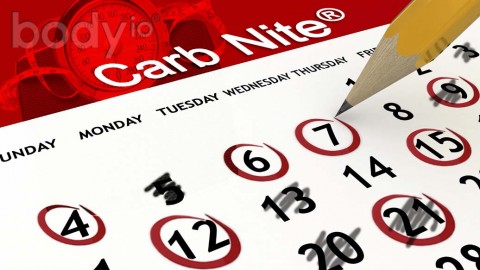Muscle growth requires muscle stimulation. I know I’ve been saying this for every body part we’ve covered so far, but it works the same way with every muscle. Your workouts, and the exercises you choose, have to stimulate growth by stimulating your muscle fibers and stimulating a pump. For your biceps, using heavier weights isn’t necessarily better for this purpose. The idea here is to create a mind-muscle link by feeling the work your muscles are doing—which can only happen through proper form and technique.
During my bodybuilding career, back when I trained at Gold’s Gym in Venice, everything we did was about intensity and muscle stimulation. There were several guys in the gym who could move more weight than me with bicep exercises—but most of them had smaller biceps. If you’re looking for growth, you have to focus on increasing the amount of weight you’re using and the number of reps you’re doing, but you can’t do this to the detriment of your technique—which I’ll address below. Bicep growth doesn’t result from simply moving weight around.
Shoulder Solution
With virtually every bicep exercise, the most common mistake people make is unnecessarily engaging their shoulders. Don’t pull with your shoulders when you curl a load. When the barbell or dumbbell is coming up, or when it’s about to come up, your shoulders shouldn’t be moving. They should remain still, in the same plane. The only parts that move are your elbows and your biceps, with moderate involvement from your wrists.
To make sure you’re doing this right, watch yourself in the mirror while you’re curling. If you see your shoulders or traps move—i.e., they go up—you’re not doing a correct bicep curl.
Tempo and Weight Selection
When you’re doing any of the exercises in this workout, you’ll want to squeeze the muscle at the top of the movement, then allow the weight to go down slowly. Your tempo going down should mirror your tempo going up. Keeping this tempo smooth—and not jerking the barbell or dumbbell up and down—will help prevent your shoulders from getting involved.
When you’re trying to determine how much weight to use, think in terms of form and technique first. If you’re more concerned with squeezing the bar and trying to simply hang on than you are about actually moving the weight, you’re going too heavy. Again, use weights where you’re assured of keeping your shoulders out of the movement.
When and How Often?
If you’re not at an advanced level yet, and you want to pack on some mass and strength in a hurry, train your biceps twice per week—every four days or so—in conjunction with a larger muscle group. I’ll give you the full split for this when we release the full X-Frame program, but for now, just work your biceps in where they’re convenient for your current schedule and training split. For example, I like to tack my bicep training onto larger groups like my shoulders or back, working my biceps after I’ve done all my work for the larger group.
Your biceps are a strong body part, so they’re a relatively easy one to grow. Remember, they’re involved in many of the other movements you do when you train, so even when they’re not the primary muscle you’re working on a particular day, they’re still getting some type of stimulation—especially when you’re training your back.
The Exercises
Seated Alternating Dumbbell Curls: Again, keeping your shoulders out of this movement, do four sets of 8-12. This will be your set and rep scheme for every exercise in this workout, with the number of reps dependent on how you feel that day. When you’re done with these four sets, you want your arms to feel like they’re about to pop.
Standing Barbell or Cable/Bar Curls: I prefer using the barbell for these, but you can use a cable machine if your gym has a bar attachment that allows you to get some width in your grip. If you’re using the Z-bar—or EZ-curl bar—hold the bar from the “outside” handles. With a straight bar, make sure you have at least twelve inches of separation between your hands.
Dumbbell Hammer Curls: I know I sound like a broken record here, but changing your grip angle means you’ll have to reinforce that lack of shoulder involvement I keep talking about. Make sure to choose a weight where you’re just using your biceps and elbows—and nothing else. Keep it strict.
Close-Grip Preacher Curl: Doing preacher curls with a narrow grip will help develop a peak on your biceps. If your gym doesn’t have a preacher unit, lean over an incline bench holding a dumbbell.
To position the pad on a preacher bench, it’s better to place it too high than too low. You don’t want the pad in a spot where you feel like your chest is coming up into your chin. Instead, let your muscles work against gravity by making sure you’re looking down on the bar, rather than out at it.
The Workout
1. Seated Alternating Dumbbell Curls: 4 x 8-12
2. Standing Barbell or Cable/Bar Curls: 4 x 8-12
3. Dumbbell Hammer Curls: 4 x 8-12
4. Close-Grip Preacher Curls: 4 x 8-12
Parting X-Frame Wisdom
The steady horse wins the race here, and you’ve got to put in your time if you want to be successful. Train like you’re not going to be able to train tomorrow. If you were to die on your way home from the gym, you want to die knowing you had a great workout. That’s the way I treated the gym during my career, and it’s the way I look at things now.
And stop posting workout photos to Facebook while you’re at the gym. Your phone and your little iPad? Leave all that bullshit at home. Focus on the moment while you’re training, and get the most out of every moment you’re there. If you have time to post on Facebook while you’re training, you may as well just stay home. I seriously feel like slapping phones out of people’s hands every time I’m in the gym.
If you want serious gains, go back to the basics—to the time where we didn’t have phones we could bring to the gym. All you had back then was your training partner to help you figure shit out. Simulate those conditions, and leave everything else outside. Your gym should feel like your church. Treat it that way.












